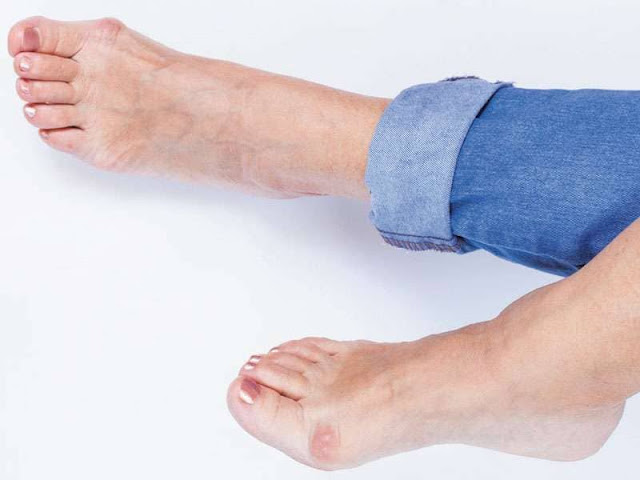Diabetic Foot Ulcer Treatment Market Is Estimated To Witness High Growth Owing To Rising Prevalence of Diabetes among Population
 |
| Diabetic Foot Ulcer Treatment Market |
The global Diabetic Foot Ulcer Treatment Market is estimated to be valued at US$ 7.72 Bn in 2023 and is expected to exhibit a CAGR of 10.2% over the forecast period 2023-2030, as highlighted in a new report published by Coherent Market Insights.
Market Overview: Diabetic foot ulcers are a common complication of diabetes and
can lead to serious complications such as infection and amputation if not
treated properly. The market for diabetic foot ulcer treatment consists of
various products and therapies aimed at promoting wound healing and preventing
complications. These products include dressings, growth factors, and devices
such as hyperbaric oxygen chambers. The key advantage of these products is that
they help in faster wound healing and reduce the risk of infections. With the
increasing prevalence of diabetes worldwide, there is a growing need for
effective and advanced diabetic foot ulcer treatment options.
Market key trends: One of the key trends in the diabetic foot ulcer treatment
market is the growing adoption of advanced wound care products. These products
are designed to improve the healing process by providing a moist environment,
promoting angiogenesis, and reducing inflammation. Advanced wound care products
include bioactive dressings, growth factors, and biologics. These products have
shown promising results in promoting wound healing and reducing the healing time.
Moreover, the rising preference for minimally invasive procedures and the
development of novel products with improved efficacy and patient comfort are
further driving the adoption of advanced wound care products in the diabetic
foot ulcer treatment market. Key players in the market include 3M Healthcare,
Braun Melsungen AG, Smith & Nephew, Inc., Organogenesis, Inc., Derma
Sciences Inc., and others.
PEST Analysis:
Political: The political factors affecting the diabetic foot ulcer treatment
market include government regulations and policies related to healthcare,
reimbursement policies for medical devices and treatments, and funding for
research and development in the healthcare sector.
Economic: The economic factors influencing the market include healthcare
expenditure and investments, the purchasing power of individuals, healthcare
insurance coverage, and the overall economic conditions in different regions.
Social: The social factors influencing the market include the prevalence of
diabetes and diabetic foot ulcers, awareness and education about diabetic foot
ulcer treatment, lifestyle changes leading to an increased risk of diabetes,
and the impact of cultural and societal factors on healthcare-seeking behavior.
Technological: The technological factors impacting the market include
advancements in wound care technologies, the development of innovative and
effective treatment options, telemedicine and remote patient monitoring, and
the integration of digital health solutions for diabetic foot ulcer management.
Key Takeaways:
The global
diabetic foot ulcer treatment market is expected to witness high
growth, exhibiting a CAGR of 10.2%
over the forecast period (2023-2030).
This growth can be attributed to the increasing prevalence of diabetes worldwide,
which is a major driver for the market. Factors such as aging population,
sedentary lifestyle, and unhealthy dietary habits contribute to the rising
incidence of diabetes and subsequently, diabetic foot ulcers.
In terms of regional analysis, North America is expected to be the
fastest-growing and dominating region in the diabetic foot ulcer treatment
market. The region has well-established healthcare infrastructure, increasing
investments in healthcare, and a high prevalence of diabetes. Moreover, the presence
of key market players and ongoing research and development activities in the
region further contribute to the market growth.
Key players operating in the diabetic foot ulcer treatment market include 3M
Healthcare, Braun Melsungen AG, Smith & Nephew, Inc., Organogenesis, Inc.,
Derma Sciences Inc., Sigvaris Inc., Acelity L.P. Inc., Osiris, Molnlycke Health
Care AB, Alkem Laboratories Ltd., Healthium Medtech, Kerecis, Podimetrics,
Carmell Corporation, Paracrine, Inc., VIVEX Biologics, Inc., and PolarityTE,
Inc. These key players are focused on research and development activities,
strategic collaborations, and product launches to strengthen their market
presence and gain a competitive edge.
Overall, the diabetic foot ulcer treatment market is expected to grow
significantly due to the increasing prevalence of diabetes, technological
advancements in wound care, and the rising demand for effective treatment
options.



Comments
Post a Comment